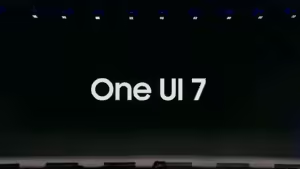
What Are Backlinks And How To Make It?
What Are Backlinks and How to Make It: A Complete Guide
In the world of Search Engine Optimization (SEO), backlinks play a crucial role in determining the rank of a website on search engine results pages (SERPs). If you’re new to SEO, you might wonder, “What are backlinks and how to make it work for your website?” In this comprehensive guide, we’ll break down everything about backlinks—from what they are, their importance, types, to how you can create them effectively.
What Are Backlinks?
Backlinks, also known as inbound or incoming links, are links from one website to another. These links signal search engines that other websites find your content valuable and worth referencing. The more quality backlinks you have, the more credible and authoritative your website appears to search engines like Google.
For example:
- Website A publishes a blog post on “The Best Fitness Tips.”
- Website B writes a related article and includes a hyperlink back to Website A’s post.
- This hyperlink from Website B to Website A is a backlink for Website A.
Why Are Backlinks Important?
- Boosting SEO Rankings: Backlinks are one of Google’s top-ranking factors. The more high-quality backlinks you have, the higher your chances of ranking on SERPs.
- Referral Traffic: Backlinks not only help your SEO but can also generate traffic. When users click on the backlink from another site to yours, they land on your page, driving potential customers to your website.
- Authority Building: Backlinks act as a “vote of confidence” from other sites. If many reputable websites link to your content, search engines see your site as trustworthy.
Types of Backlinks
Before diving into how to make backlinks, it’s important to understand the two main types of backlinks:
1. DoFollow Backlinks
These are the most valuable types of backlinks because they pass on SEO value (link juice) to your site. When someone adds a “dofollow” link to their website, search engines like Google recognize it as a vote of approval, boosting your SEO ranking.
2. NoFollow Backlinks
These links do not pass on SEO value to the linked site. They were created to prevent spammy links and comments. While they may not directly impact your ranking, nofollow links can still generate traffic and bring brand exposure.
Tip: Always aim for dofollow backlinks from high-authority sites, but don’t completely disregard nofollow links—they can still help your site gain traffic.
How to Make Backlinks?
Now that we know what are backlinks and how to make it beneficial for SEO, let’s explore different strategies to build quality backlinks for your site.

1. Create High-Quality Content
One of the most effective ways to earn backlinks is by consistently publishing high-quality content. Content that is informative, well-researched, and valuable is more likely to be referenced by others.
Examples of Link-Worthy Content:
- In-depth blog posts or guides
- Original research or studies
- Infographics or data visualizations
- Case studies or success stories
Action Step: Create long-form content on topics related to your industry, offering actionable advice or original data. When other sites find your content valuable, they’re likely to link back to it.
2. Guest Blogging
Guest blogging is one of the most popular ways to get backlinks. It involves writing articles for other websites within your niche in exchange for a backlink to your site.
How to Do Guest Blogging:
- Find Websites Accepting Guest Posts: Search for websites that allow guest contributions in your niche by using queries like “write for us” or “submit guest post.”
- Pitch an Idea: Contact the website with your topic ideas. Ensure that the content aligns with their audience’s interests.
- Include a Backlink: In your guest post, include a relevant backlink to your site, usually in the author bio section or within the content.
Pro Tip: Choose authoritative sites with a strong domain rating (DR) to maximize the SEO benefits of the backlink.
3. Broken Link Building
Broken link building is an advanced SEO strategy where you find broken (dead) links on other websites and suggest your content as a replacement.
How to Do It:
- Use tools like Ahrefs or Check My Links to find broken links on other websites.
- Reach out to the website owner and inform them of the broken link.
- Offer your relevant content as a replacement for the broken link.
This method provides value to the website owner (by helping them fix broken links) while securing a valuable backlink for your site.
4. Skyscraper Technique
The Skyscraper Technique is a strategy where you identify high-ranking content in your niche, create something even better, and promote it to gain backlinks.
Steps for Skyscraper Technique:
- Find High-Ranking Content: Use tools like BuzzSumo or Ahrefs to identify content in your niche with a large number of backlinks.
- Create Superior Content: Create content that is more comprehensive, updated, or visually appealing than the original.
- Reach Out: Contact websites that linked to the original content and ask them to link to your improved version instead.

Additional Tips for Building Backlinks
1. Use Social Media
Sharing your content on social media platforms can help it gain visibility. When your content reaches a wider audience, there’s a higher chance someone will link to it.
2. Comment on Industry Blogs
Leaving insightful comments on blogs related to your niche can help build relationships with bloggers and site owners. Sometimes, these relationships turn into backlink opportunities.
3. Build Relationships
Networking with influencers, bloggers, and site owners in your industry can naturally lead to backlinks. When you have a solid relationship, others are more likely to reference your content in their posts.
How to Evaluate Backlink Quality
Not all backlinks are created equal. Some may provide more SEO value than others. Here’s how to assess the quality of a backlink:
| Factor | Description |
|---|---|
| Domain Authority | Links from high-authority domains (like Forbes, Huffington Post) carry more weight. |
| Relevance | Backlinks from sites related to your niche are more valuable. |
| Placement | Links embedded within content (rather than footers or sidebars) tend to have more impact. |
| Anchor Text | The anchor text (the clickable words) should be relevant to the content it links to. |
Conclusion
Backlinks are a critical part of any successful SEO strategy. To recap, what are backlinks and how to make it work for your website revolves around creating valuable content, building relationships, and leveraging advanced techniques like guest blogging and broken link building.
By focusing on quality over quantity, you can steadily build a strong backlink profile that will boost your website’s search engine rankings and drive more organic traffic.
Incorporate these strategies into your SEO plan, and watch your website’s authority and traffic grow over time!
























Post Comment